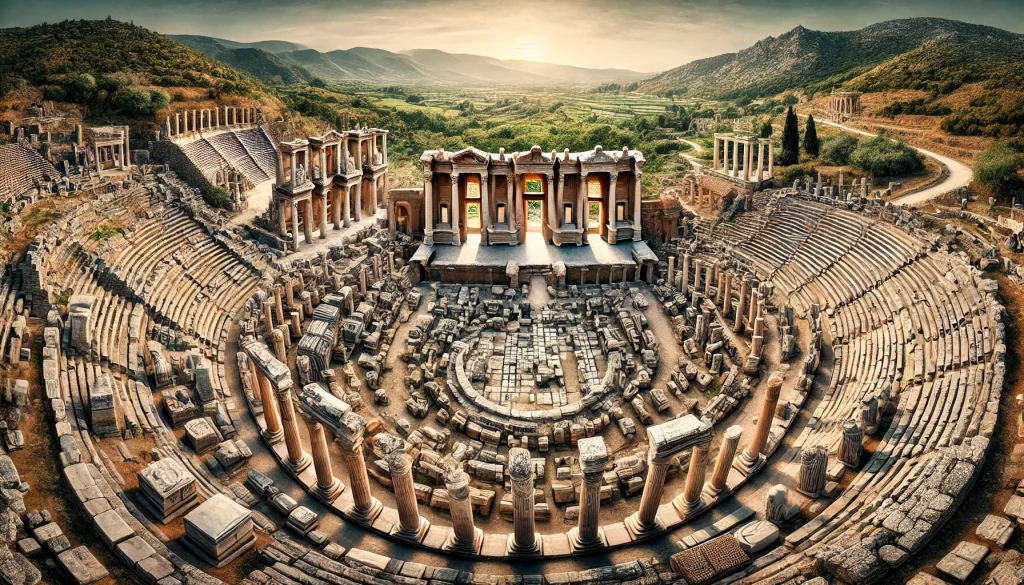
Turkey is uniquely rich in its historical heritage. Each ancient city bears traces from different periods and reveals important points in human history. These ancient cities are of great importance not only archaeologically but also culturally and touristic. Every tourist visiting Turkey has the opportunity to follow the traces of the past step by step by exploring these ancient cities.
Table of Contents
Ancient Cities of Turkey
As the cradle of civilizations that shaped world history, Turkey has a great historical heritage. Today, many ancient cities, ruins and structures come to light and are visited by local and foreign tourists every year. In this article, we will examine Turkey’s most popular ancient cities in order of popularity. This ranking is based on criteria such as the number of visitors, historical importance and cultural impact.
1. Ancient City of Ephesus

Ephesus is one of the most popular ancient cities in Turkey and is located in Izmir province. Ephesus, one of the most important cities of ancient Greek and Roman civilizations, attracts attention with its size and cultural richness. Ephesus, which is on the UNESCO World Heritage List, is visited by millions of tourists every year.
Ephesus is a world-renowned city with a history estimated to date back to 3000 BC. Among its most well-known buildings are the Temple of Artemis, the Library of Celsus and the ancient theater. The Temple of Artemis was recognized as one of the Seven Wonders, but today only its ruins remain. The Library of Celsus is one of the most important libraries in the ancient world.
The theater of Ephesus is one of the largest of the Roman theaters with a capacity of 25,000 people and is very well preserved. In addition, the Agora, the Temple of Hadrian and the Odeon in the heart of the city provide examples of Ephesus’ elegant architecture from the ancient Roman period.
Today, the ancient city of Ephesus is not only an archaeological site, but also a world-class cultural and tourist attraction. Excavations in Ephesus lead to new finds every year and the city remains an important research area for scientists.
2. Pamukkale and the Ancient City of Hierapolis
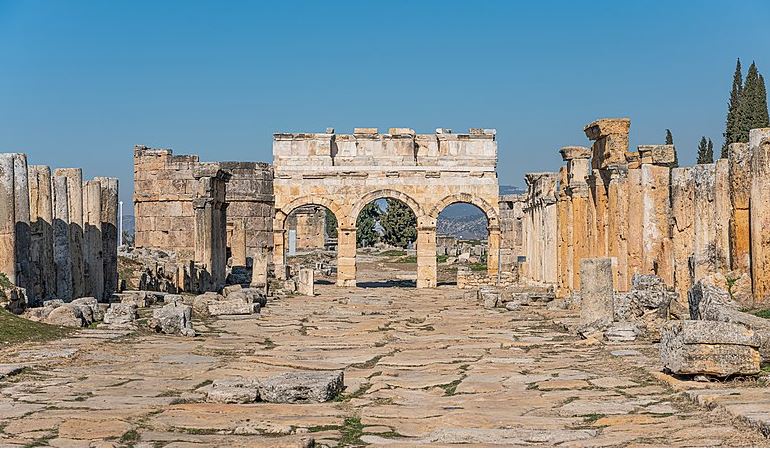
Pamukkale is a natural wonder known for its world-famous white travertine terraces. However, Pamukkale is not only known for its natural wonders, but also for its ancient ruins. The ancient city of Hierapolis is located next to Pamukkale and is known as one of the most important health centers of the ancient Roman period.
Hierapolis was founded in the 2nd century BC and became a spa city famous for its thermal waters during the Roman Empire. Among the most remarkable structures in this city are the ancient theater, temples, baths and necropolis. One of the most interesting aspects of Hierapolis is that the ancient Roman aqueducts and thermal pools are still in active use.
The white travertines of Pamukkale and the impressive ruins of the ancient city of Hierapolis attract local and foreign tourists every year. This region is one of those rare places where natural beauty and historical heritage combine.
3. Ancient City of Troy
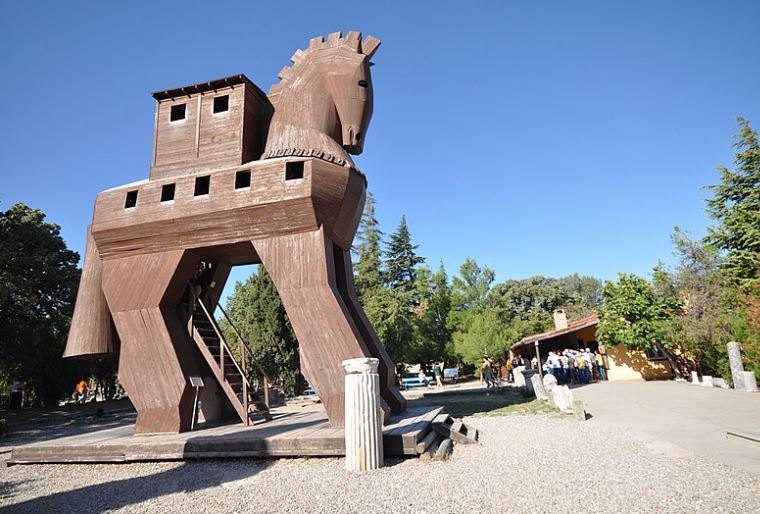
Troy has a great historical and cultural significance. Located in Çanakkale province, Troy is known for Homer’s famous epic “Iliad” and is considered the center of the Trojan War. Troy was included in the UNESCO World Heritage List in 1998 and is visited by thousands of tourists every year.
The ancient city of Troy has a history dating back 3000 years. The city has been home to different civilizations and bears traces of each period. Among its most well-known structures are the great defensive walls, the Trojan Horse and the remains of many houses and temples. Excavations in the 19th century yielded many finds that confirm the true history of Troy and the legendary accounts of the city.
One of the most remarkable elements of Troy is the city walls built for the defense of the city. These walls were built to protect the city during the Trojan War and are well preserved to this day. Also, the statue of the Trojan Horse symbolizes Troy’s legendary past and is the most recognizable structure in the region.
4. Göbekli Tepe: The Beginning of History
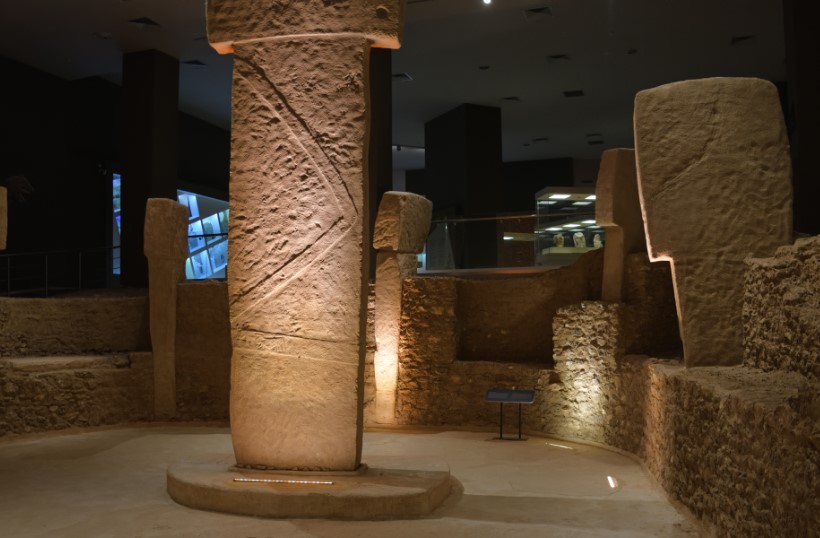
Göbekli Tepe draws attention as an area located in Şanlıurfa province borders and is considered to be the oldest known temple complex in the world. Göbekli Tepe, which dates back to 9600-9500 BC, is of great archaeological importance. Included in 2018 on the UNESCO World Heritage List, Göbekli Tepe is one of the oldest examples of prehistoric human settlements and religious structures.
The stone structures of Göbekli Tepe show that the technology of the period was quite advanced. The stones used in the structures weigh 5-10 tons and were shaped by stone-age people. These structures are recognized as an important archaeological site that bears the traces of the first settled life and religious beliefs.
Göbekli Tepe remains a mystery to historians and archaeologists. This region has an importance that can be considered as the zero point of history and is therefore visited by thousands of people every year.
5. Aspendos Ancient Theater
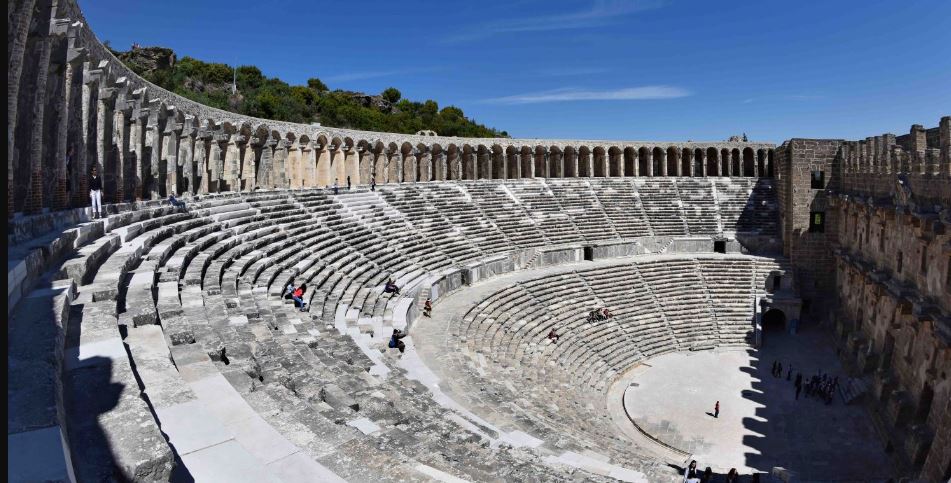
Aspendos, located in Antalya province, is home to one of the best preserved theaters of the Roman period. Built in the 2nd century BC, the Aspendos Theater was one of the largest theaters of the period with a capacity of 20,000 people and is still used for events today.
The theater of Aspendos is very famous for its acoustic structure. This theater is considered a worldwide engineering marvel. Aspendos also contains the ruins of many Roman buildings such as aqueducts, baths and basilicas.
Aspendos is notable not only for its theater, but also for its examples of ancient Roman city planning. For this reason, Aspendos is an important destination for both architecture and history buffs.
6. Hattusa: Capital of the Hittite Empire
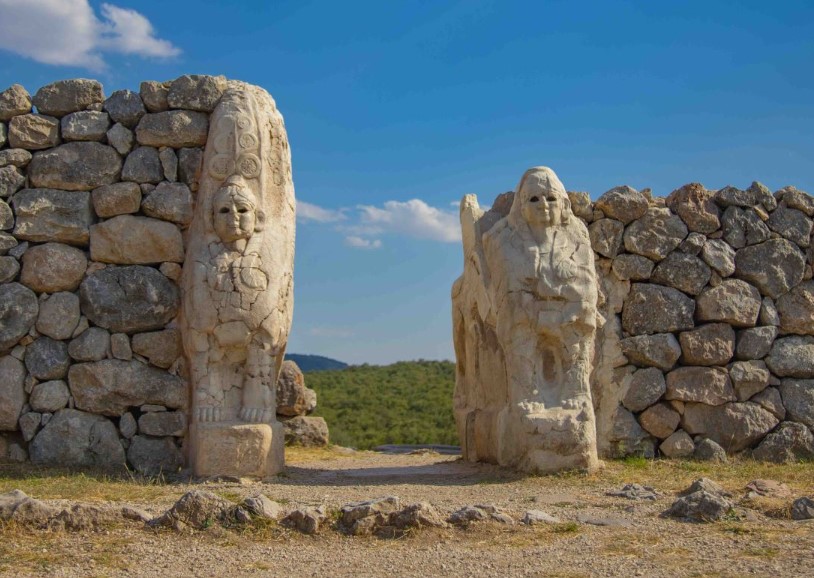
Located within the provincial borders of Çorum, Hattusa is known as the capital of the Hittite Empire and has a great historical significance. In 1986, Hattusa was included in the UNESCO World Heritage List and became the cultural and political center of the Hittites. The ruins of Hattusa reveal the Hittites’ advanced engineering skills and grand architecture.
Among the most important structures in Hattusa are the remains of great walls, gates, temples and palaces. The most remarkable of these is the Great Gate. In addition, excavations in Hattusa led to the discovery of Hittite cuneiform tablets. These tablets help us understand the Hittites’ understanding of administration, social structure and religious beliefs.
7. Ancient City of Miletus
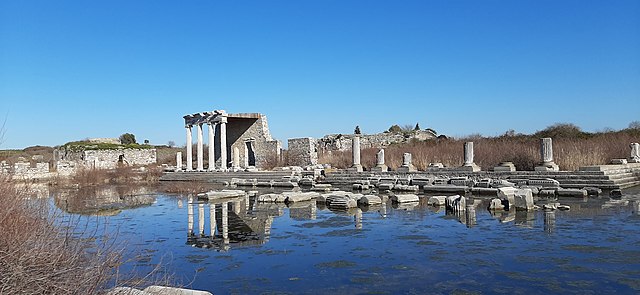
Miletus, located in Aydın province, is one of the most important cities of Ancient Greece. Founded around 3000 BC, Miletus has a great heritage especially in the fields of philosophy, science and mathematics. Famous philosophers such as Heraclitus lived in Miletus and the city made significant contributions to the development of ancient thought.
The most important buildings in Miletus include a large theater, the Temple of Apollo and the Agora. In addition, the preservation of the walls, harbor ruins and parts of Miletus reveals the history and richness of this ancient city.
8. Ancient City of Perge

Perge, located in Antalya province, is one of the most important cities of the Ancient Roman period. Perge, which existed from the 4th century BC until the Roman Empire period, is especially famous for its theater, stadium and temples. One of the most remarkable structures of Perge is the Roman theater.
Perge is also known for its avenues and aqueducts. Its city planning is one ofhe great examples of Roman engineering. Today Perge is of great archaeological and architectural importance.



